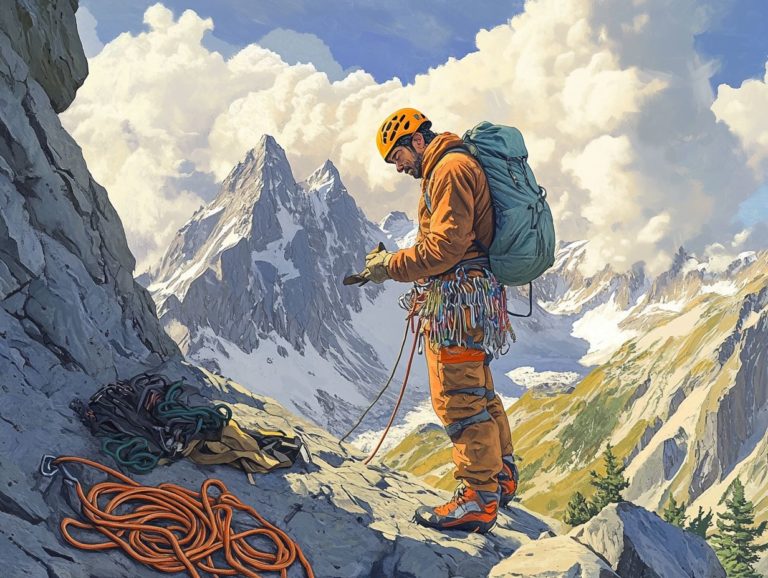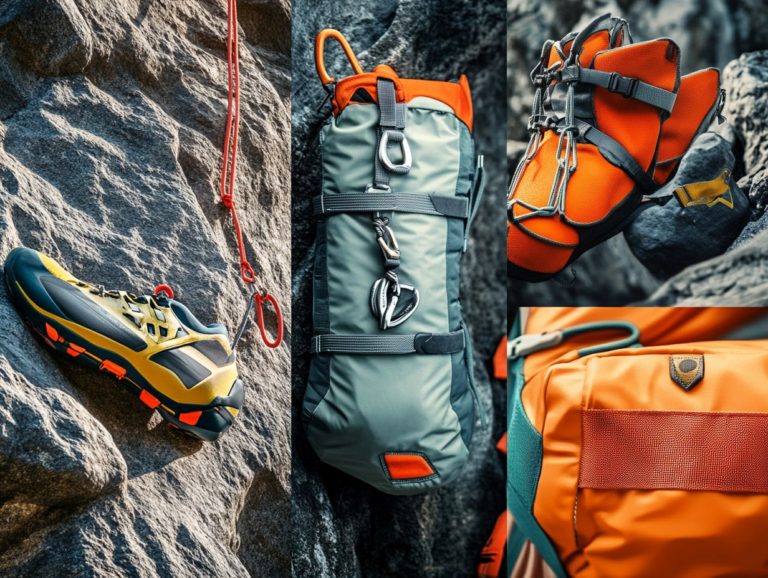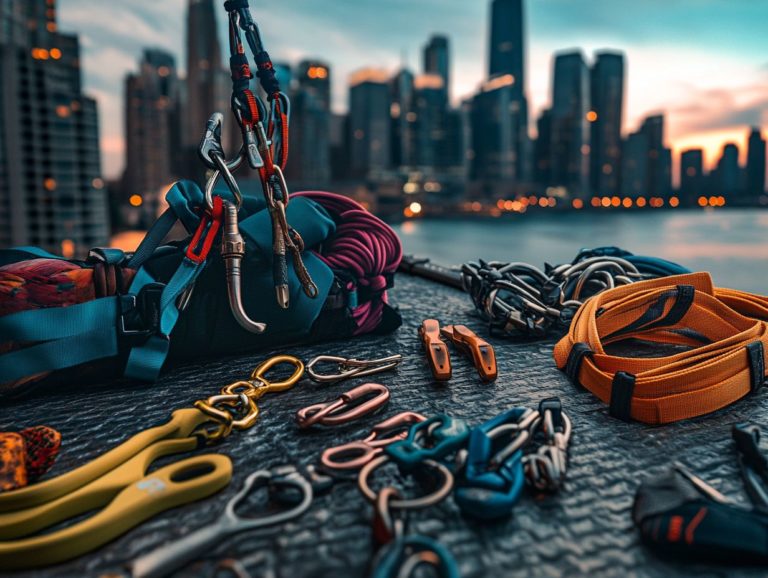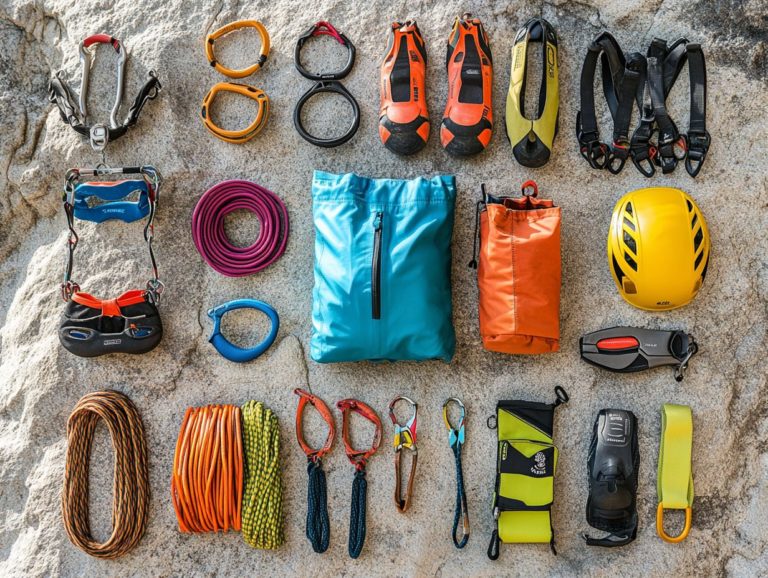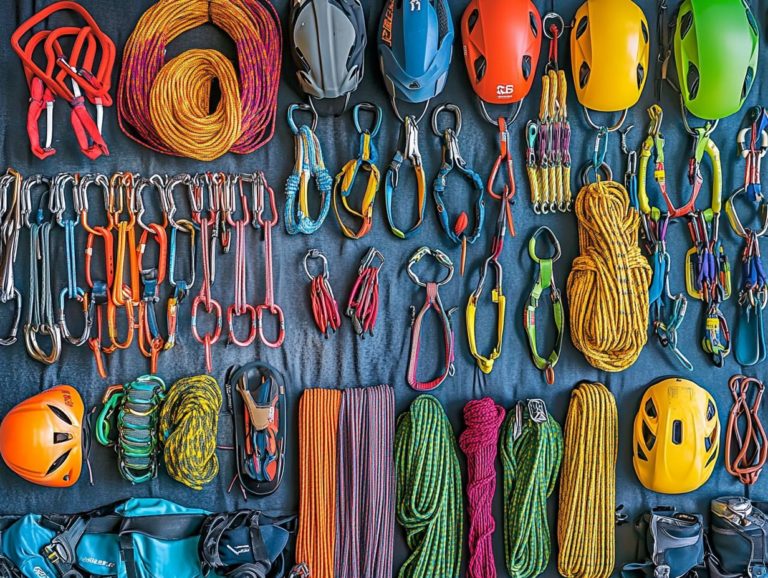Understanding the Types of Climbing Helmets
Climbing is an adrenaline-pumping adventure! Prioritizing safety is paramount. A reliable climbing helmet can be a true lifesaver, offering protection for your head against falls and impacts.
Take the time to explore the various types of climbing helmets hard shell, soft shell, and hybrid to discover the perfect fit for your specific needs.
When making your selection, consider essential factors such as comfort, durability, and maintenance. These elements empower you to make informed choices for your climbing adventures.
Climb smart and prioritize your safety!
Contents
Key Takeaways:
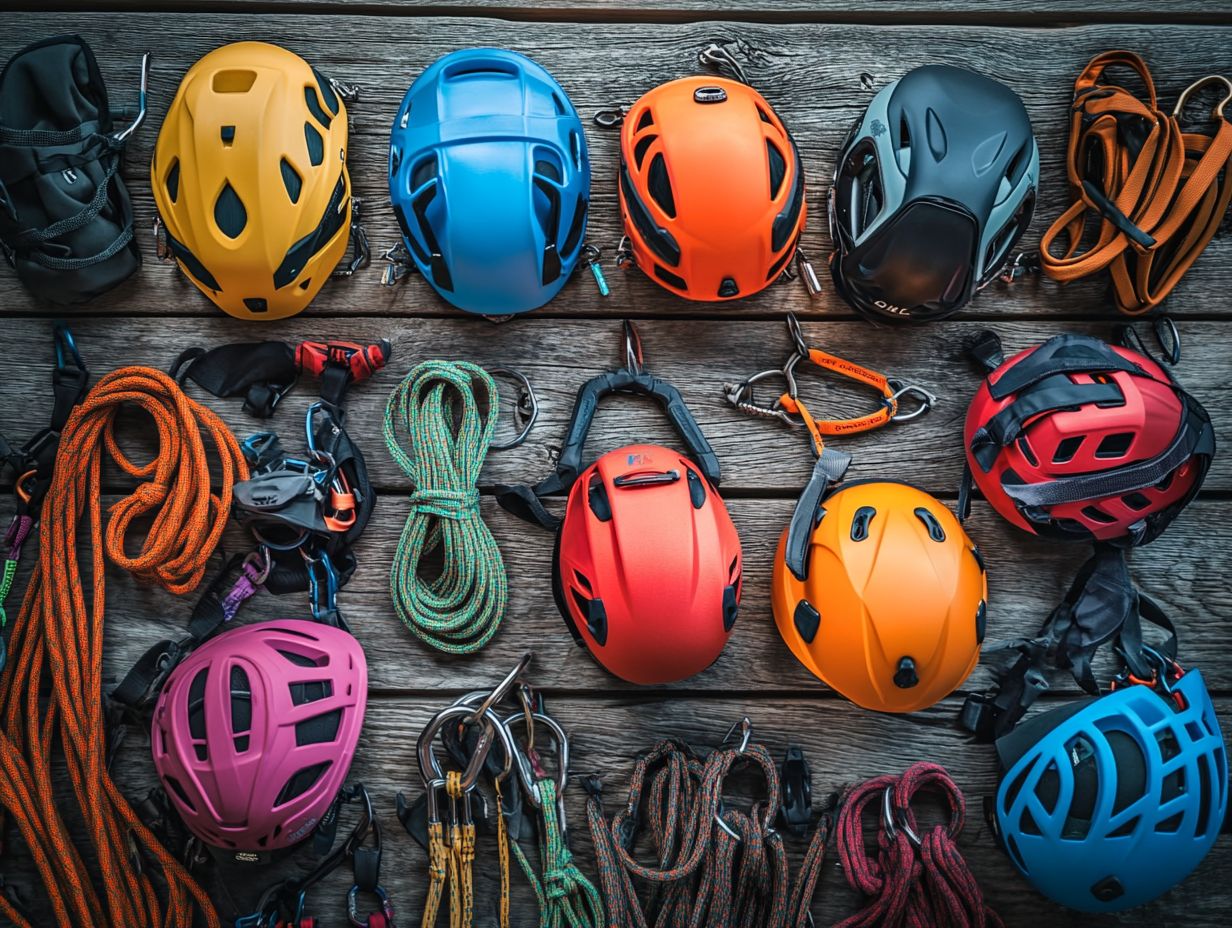
Always wear a climbing helmet to protect your head from potential falls and impacts. Choose the right type of climbing helmet based on your needs and preferences hard shell, soft shell, or hybrid. Properly care for your climbing helmet by regularly cleaning and inspecting it, and replacing it when necessary for maximum safety.
Why a Climbing Helmet is Important
Climbing helmets are a vital component of your climbing gear. They offer crucial protection against falling debris, impacts, and potential injuries that can arise during rock climbing, ski mountaineering, or ice climbing.
The significance of wearing a climbing helmet cannot be overstated; it dramatically lowers the risk of head injuries and enhances your overall safety while climbing.
Thanks to advancements in helmet design, features like special technology designed to reduce rotational forces during impacts and lightweight materials ensure that you remain well-protected without sacrificing comfort.
Types of Climbing Helmets
Understanding the nuances of climbing helmets is essential for choosing the perfect one tailored to your climbing pursuits. Each type presents unique features designed for specific environments.
Hard shell helmets stand out for their exceptional durability and impact resistance, providing robust protection. In contrast, soft shell helmets prioritize comfort and are wonderfully lightweight, making them ideal for longer climbs.
If you desire versatility, hybrid helmets seamlessly blend the benefits of both categories, adapting to a range of climbing applications with ease.
Hard Shell Helmets
Hard shell helmets are crafted to deliver maximum protection against impacts, ensuring you are safeguarded from falling rocks and other hazards during your climbs. Constructed from durable materials, these helmets excel in impact absorption and meet rigorous safety standards.
The outer shell, typically made of viscoelastic materials, effectively disperses energy upon impact. The inner foam layer absorbs shock, significantly reducing your risk of injury. Lightweight designs minimize neck strain, allowing you to wear them comfortably for extended periods.
Features like ventilation systems enhance breathability, keeping you cool during even the most rigorous activities. Many models come with adjustable chin straps for a secure fit. Some even offer compatibility with various accessories, boosting their versatility.
Adhering to established safety certifications, such as EN 12492 or CEN standards, ensures that these helmets provide reliable and trustworthy protection, making them essential gear for any serious climber.
Soft Shell Helmets
Soft shell helmets are often lighter and more comfortable than their hard shell counterparts. They are a popular choice for climbers who value comfort and breathability on extended climbs. With enhanced ventilation systems, these helmets allow for better airflow, keeping you cool while you tackle challenging routes.
This becomes especially advantageous during warmer days or strenuous ascents, as it helps minimize overheating and sweat buildup. Brands like Black Diamond and Petzl have rolled out models showcasing these benefits, offering superior comfort along with robust protection without the bulk.
Many climbers appreciate the adjustable fittings of these helmets, allowing for a snug yet flexible fit that accommodates various head sizes.
Soft shell helmets embody a perfect blend of functionality and comfort, making a noticeable difference in your climbing experience.
Don t wait! Choose your climbing helmet and gear up for your next adventure today!
Hybrid Helmets
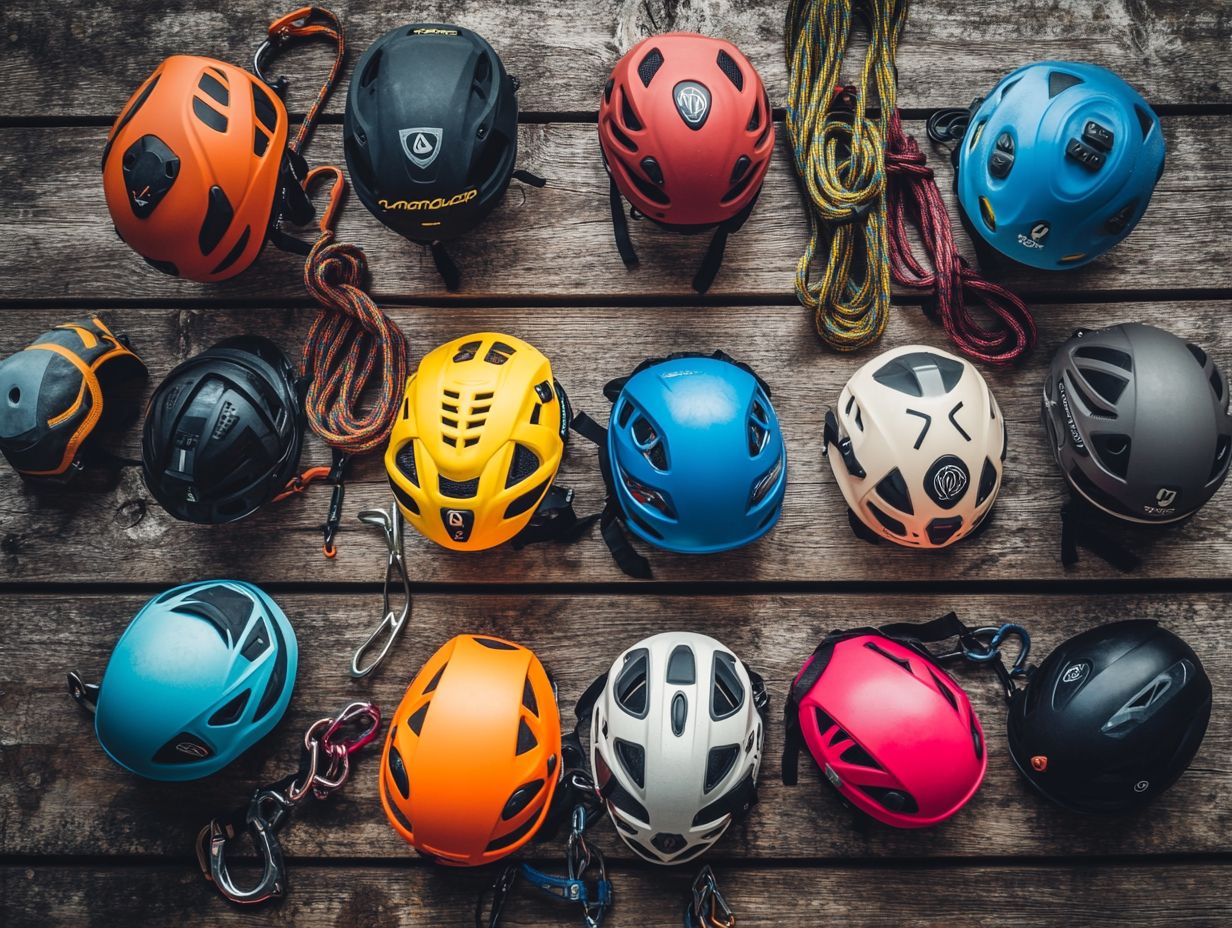
Hybrid helmets seamlessly blend the robust protective qualities of hard-shell designs with the lightweight comfort of soft-shell models, offering you a versatile option for your climbing adventures. If you re a climber in pursuit of the perfect equilibrium between safety and comfort, these helmets are designed with you in mind, often featuring cutting-edge designs and materials.
Their unique dual certification (this means they are tested for two types of safety) ensures they meet stringent safety standards for both impact protection and penetration resistance, making them suitable for a variety of environments, from rock climbing to mountaineering and ice climbing. The addition of vents enhances breathability, so you can stay cool even during those intense ascents.
An adjustable fit ensures stability and comfort, no matter how challenging the weather may be. Whether you re navigating rocky terrain or scaling icy faces, these helmets not only prioritize your safety but also elevate your style perfect for adventurers who refuse to compromise on performance.
Factors to Consider When Choosing a Climbing Helmet
Choosing the perfect climbing helmet requires careful consideration of several key factors, such as achieving a proper fit, knowing your head size, and evaluating the helmet’s performance across different climbing scenarios. A well-fitting helmet enhances comfort and maximizes effectiveness, enabling you to concentrate fully on your ascent without distractions.
Fit and Comfort
Fit and comfort are absolutely crucial when you choose a climbing helmet. A poorly fitted helmet could significantly compromise your safety and performance. Therefore, it’s essential to measure your head size and adjust the helmet straps to achieve that snug yet comfortable fit.
A well-fitting helmet should rest level on your head, covering your forehead without sliding back. Ensure that the side straps form a V-shape just below your ears for optimal protection. Adjusting the chin strap is equally important; it should be snug enough to keep the helmet secure during vigorous activity while still allowing you to breathe easily.
Many helmets feature removable padding or adjustment systems to help you find that perfect fit. Keep in mind that a helmet that’s too loose could slide off in a fall, while one that’s too tight may cause discomfort and distraction as you climb. Get the right fit to enhance your climbing experience!
Protection and Durability
The protection and durability of a climbing helmet are pivotal factors that significantly influence its ability to prevent head injuries during your climbing endeavors. Always choose helmets that meet industry safety standards for your safety and carry the appropriate certifications, ensuring they deliver adequate protection against impacts.
Certifications from reputable organizations, such as the American National Standards Institute (ANSI) (which ensures products meet American safety standards) and the European Committee for Standardization (CE) (which indicates compliance with European standards), indicate that a helmet has undergone rigorous testing to withstand the various forces you may encounter while climbing.
By selecting a helmet that meets or exceeds these standards, you not only enhance the reliability of your gear but also gain peace of mind, knowing you are making a prudent investment in your safety. The durability of climbing helmets is designed to withstand the harsh environments and wear associated with climbing, providing you with long-lasting protection that is essential for your adventures in challenging terrains.
Weight and Ventilation
The weight and ventilation of a climbing helmet can profoundly shape your climbing experience. A lighter helmet enhances comfort during lengthy ascents. Effective ventilation helps regulate temperature and moisture. Choosing a helmet that perfectly balances weight and airflow can elevate your overall climbing performance.
If you re gearing up for long climbs, you know that excess weight can lead to fatigue. Choose a helmet that feels weightless climbing should feel effortless! Climbing often unfolds in unpredictable weather. Therefore, effective ventilation is crucial in preventing overheating and discomfort. When you choose a well-ventilated design, you can keep your focus on the ascent instead of being distracted by sweat trickling down your brow.
These considerations go beyond comfort; they significantly impact your climbing efficiency. Your ability to perform at your best hinges on your overall well-being, making the right helmet choice an integral part of your climbing gear.
Proper Care and Maintenance of Climbing Helmets
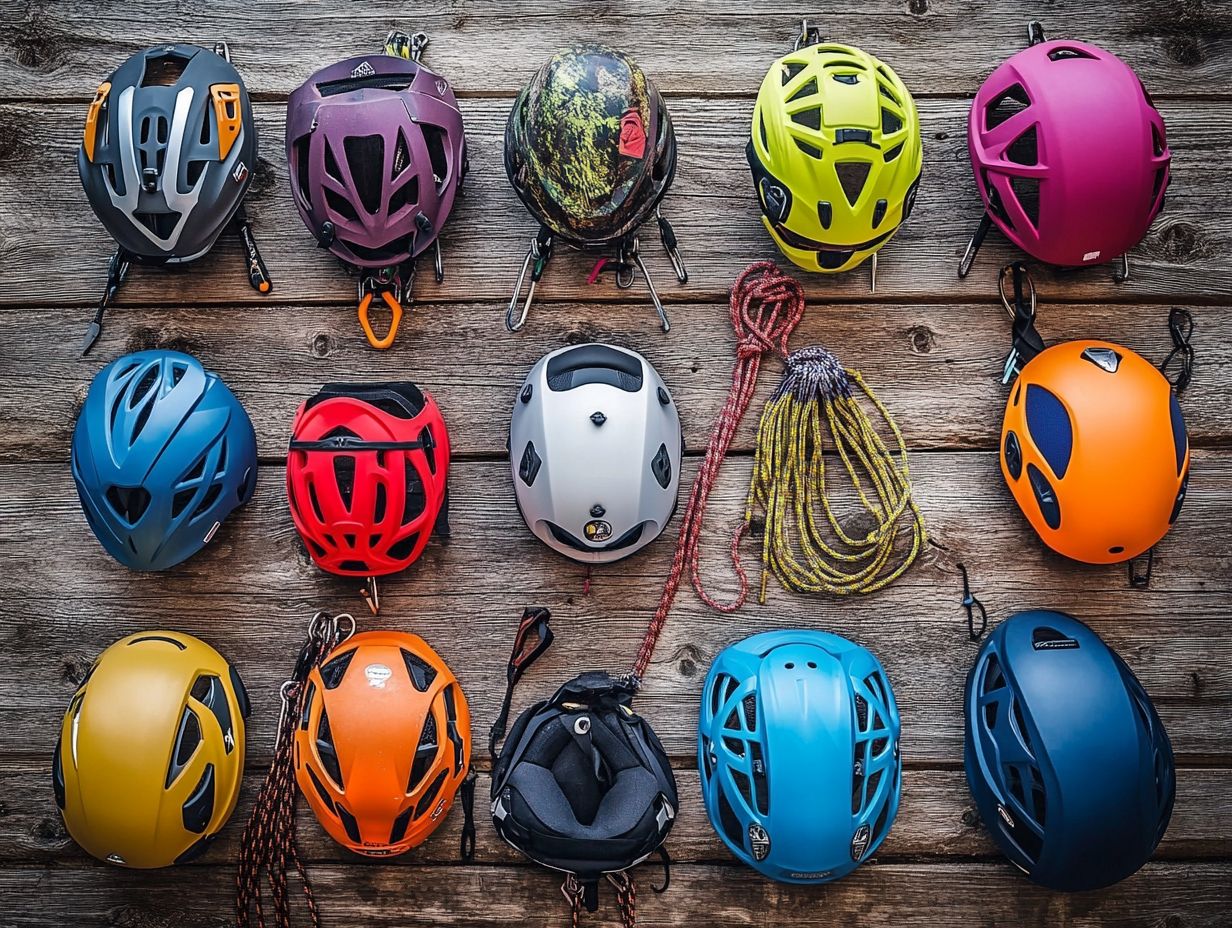
Proper care and maintenance of your climbing helmet are essential for ensuring its longevity and effectiveness in providing head protection. Regular inspection, keeping it clean, and replacing it when necessary are all vital steps in maintaining performance. By prioritizing these practices, you significantly enhance your safety while climbing.
Cleaning and Inspection
Cleaning and inspecting your climbing helmet regularly is crucial for maintaining its integrity and performance. This means looking for any signs of damage, dirt, or wear and giving it a gentle clean to ensure it remains protective.
Start by gathering some warm water and mild soap an all-purpose cleaner or a specialized helmet cleaner is ideal. Dampen a soft cloth in the soapy water and carefully wipe down the exterior, paying special attention to the visor and strap area.
Next, conduct a thorough inspection of the helmet for any cracks, dents, or frayed straps that could jeopardize your safety in the event of a fall. You should assess your helmet after each climbing session and remember to replace your helmet every five years, even if it looks fine. Materials can degrade over time, so staying proactive about maintenance significantly enhances your safety and the longevity of your gear.
Replacing a Helmet
Replacing your climbing helmet is a crucial part of maintaining safety standards during your climbing adventures. If your helmet has endured an impact, shows signs of wear, or has simply been around too long, recognizing the need for a replacement can be the difference between safety and potential head injuries.
You should regularly assess your helmet for any visible damage, such as cracks, dents, or significant scuffs that could compromise its performance. Even a seemingly minor impact can affect the helmet’s integrity, reducing its effectiveness at absorbing shock in future incidents.
Manufacturers typically recommend replacing helmets every three to five years, even if they haven t been in any accidents, as materials can degrade over time. By adhering to industry safety standards, you ensure that you re using reliable protection, ultimately enhancing your overall climbing experience.
Frequently Asked Questions
What are the different types of climbing helmets?
There are three main types of climbing helmets: hardshell (a tough outer shell with foam inside for extra protection), hybrid (a combination of a hardshell and foam), and foam (made entirely of foam and the most lightweight option).
What are the advantages of a hardshell climbing helmet?
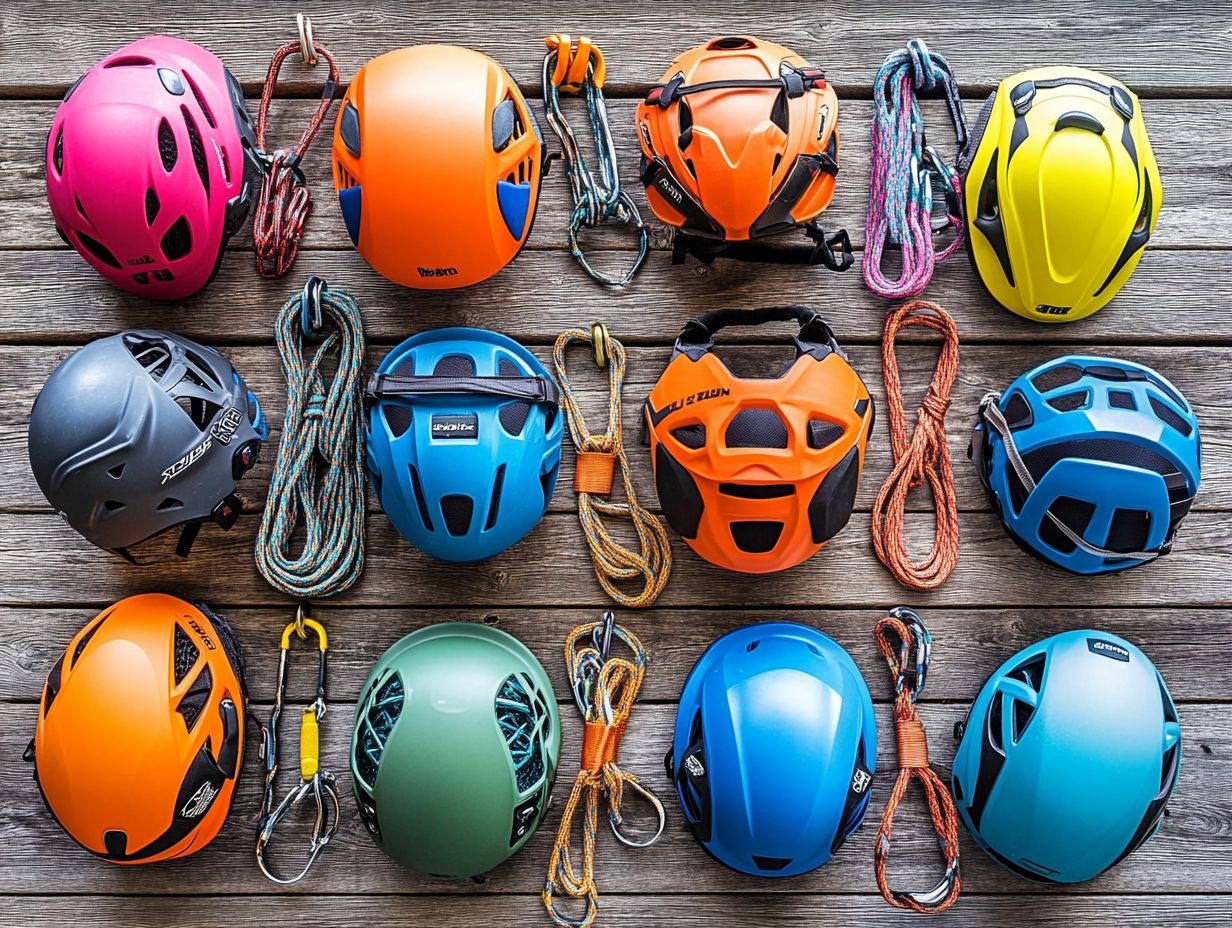
Hardshell helmets offer the most protection against impact and penetration from falling objects. They are also more durable and can withstand multiple impacts.
Why Choose a Hybrid Climbing Helmet?
Hybrid helmets strike a great balance. They provide better protection than foam helmets while being lighter and more comfortable than hardshell options.
Are Foam Climbing Helmets Safe?
Foam helmets might not protect as well against impacts or sharp objects. However, they’re still safe for climbing, especially in activities like sport climbing where the risks are lower.
Can You Use a Climbing Helmet for Other Activities?
Climbing helmets are primarily made for climbing. You can also wear them for activities like skiing, snowboarding, and cycling, but check for certification first.
Do All Climbing Helmets Fit the Same?
No, climbing helmet fits vary by brand and model. Trying on several helmets is essential to find one that fits comfortably and securely.

